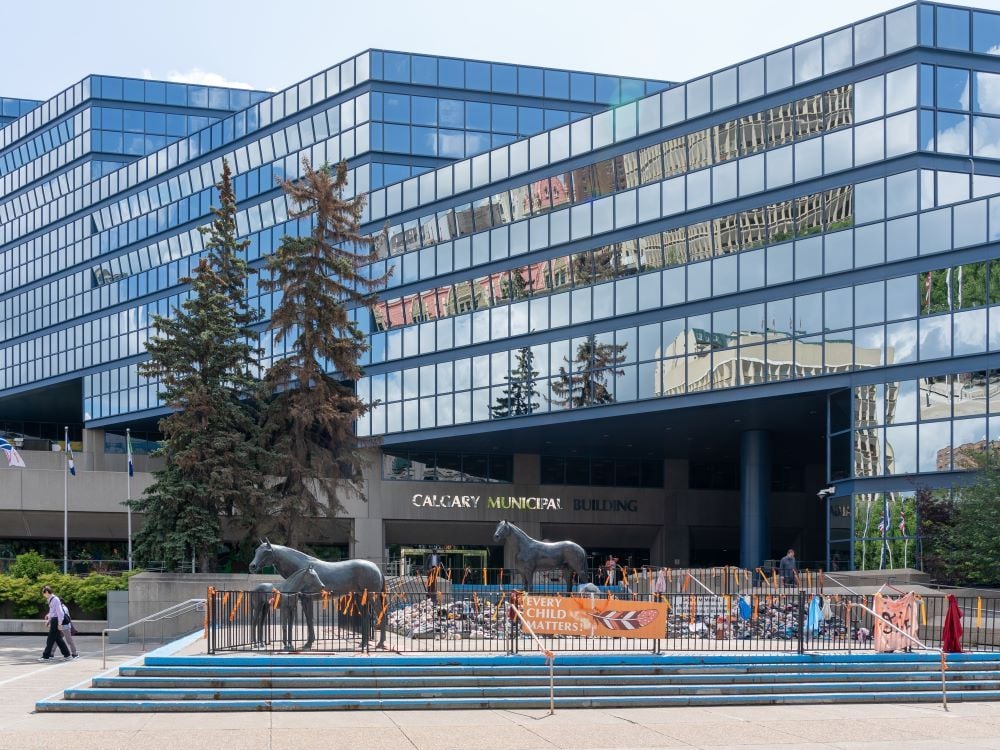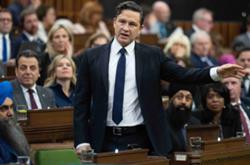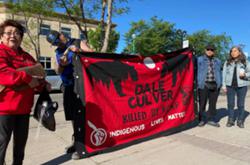At a moment when many Canadian cities face big challenges and changes, some city halls are slow to involve citizens in serious discussions about what actions to take.
That can drive polarization and distrust, and erode democracy.
“It’s really important for municipalities to engage with their residents on a regular basis, because the decisions made by municipalities are often the ones that affect us the most,” says Elodie Jacquet, a public engagement specialist and PhD student at Simon Fraser University.
For a sense of what is lost when citizen engagement erodes, consider Calgary.
“There’s this deep anger about the dwindling role of community associations in consultations,” says Leslie Evans, executive director at the Federation of Calgary Communities, a non-profit organization and a civic partner of the City of Calgary. “This has been happening for at least a decade now, where the city has been leaving residents out of the conversation.”
A recent proposal to rezone the entire city has brought this discontent to the forefront. Citizens’ desire to participate has been so pent up for so long that a public hearing scheduled for April 22 has had to be stretched to last up to seven days.
In January, the City of Calgary launched a campaign to inform Calgarians on the changes that would be brought about by its plan to increase the minimum density in residential areas by allowing property owners to build up to four dwellings, plus basement suites, on land formerly zoned to allow just one or two. This new level of zoning is known as R-CG.
The move has been lauded by politicians, city planners and affordable housing advocates for its potential to transform Calgary into a more sustainable, affordable and equitable city.
The materials distributed by the city lead with two important data points: 84,600 Calgary households whose earnings fall below $60,000 are currently struggling to afford their homes; and 87 per cent of low-density residential properties don’t allow for more than two dwellings per parcel.
Allowing for more density across the city, the information materials explain, would boost the supply of housing and increase the chances more Calgarians can choose to live close to schools, grocery stores, restaurants and workplaces, and forgo the need to own a car.
This would not only help reduce greenhouse gas emissions; in theory, more density would also reverse the exclusionary effects of low-density zoning and promote spatial justice by facilitating housing affordability across the city.
Pertinent questions
For all the positives the proposal’s boosters put forth, some Calgarians find the claims too rosily simplistic. In fact, it’s reasonable to worry the proposed policy will continue to reproduce the shortcomings of an inequitable system, as planning policies have tended to do. And steamrolling such concerns with a public relations campaign is no substitute for robust public engagement with such thorny issues.
“There is this overwhelming notion that it’s in the public interest to have higher density, and to change the rules to make things easier for development to happen,” says Jill Grant, a professor emeritus of planning at Dalhousie University. “All the while, planners are ignoring some of the real problems, which are about the concentration of property ownership and the inability of the development industry to provide affordable housing, no matter what the density.”
According to Grant, the failure of planners to grasp the root causes of social issues has led them to implement “fads” such as the urban renewal schemes of the 1950s and 1960s, whose scars have left barren plots of land and torn neighbourhoods apart in the name of the public interest — even as communities pushed back against these initiatives at the time.
“Planning, in many ways, reproduces the values of the time,” Grant says. “If it’s occurring in a place where racism is an issue, or where injustice is justified in some way, then planning is likely to show that as well.”
If done well, however, public participation can influence the creation of more equitable planning policies, Grant says. “The challenge is how difficult it is to get meaningful public engagement.”
Keys to effective engagement
The goal of public engagement can be to inform, consult, collaborate or empower. Of these aims, the one that gives citizens the least amount of influence is a purely informative process.
To be considered meaningful, public engagement should meet four general conditions: timeliness, representativeness, transparency and thoroughness, researchers say.
“Citizens need to know what is happening and have accurate information in order to provide feedback,” says Kimberly Jones, a research co-ordinator of urban policy at the University of Calgary’s School of Public Policy. “There’s a responsibility by the city government to ensure that they’re giving accurate and transparent information.”
Jones notes that while Calgary’s engagement with its citizens on this important issue hasn’t been perfect, no one should have been taken by surprise that big changes are afoot.
“This work is following along after other policies and strategies which had their own communication, engagement and council processes,” she says, pointing to Calgary’s Municipal Development Plan, which was implemented after a process that engaged more than 18,000 Calgarians in 2005. “That plan envisions a huge rebalance to growth from the outskirts to the already developed community.”
But lack of transparency frustrates some observers of Calgary’s process.
“There’s a certain assumption being made about how many properties will actually turn over and be rebuilt as R-CG,” says Byron Miller, a professor of geography and co-ordinator of the urban studies program at the University of Calgary, about the changes introduced by the rezoning proposal.
“People need to know what the assumptions are,” says Miller. “I don’t have a good handle on that, and I’ve certainly tried to watch this pretty closely.”
Calgary’s city administrators have provided scant information on the expected impact the construction of 1,000 additional dwellings per year will have on house prices or on rental rates, which keeps in the dark the 84,600 lower-income households already struggling to make rent.
Knocking down older single-family housing and replacing it with denser developments may seem like a logical way to bring down housing prices. But Miller isn’t convinced.
“The sorts of bungalows built in the ’40s, ’50s and ’60s,” he explains, are a known commodity that could “provide inexpensive housing for lower-income households in the market context” as their former owners with more money move to pricier options. “But what we’re doing now is basically redeveloping that very housing and replacing it with expensive fourplexes.”
So there’s an important public conversation to be had about whether streamlining the construction of row houses and fourplexes across the city will really drive down their costs significantly, as council’s planning commission has been assured by the city’s administration. That promise disclosed no specific percentage price drop.
Beyond one-way communication
Instead of hashing out such nuances via back-and-forth exchanges with citizens over many months, the city’s communication about its rezoning proposal has been largely one-way and purely informational.
In a statement, city administration told The Tyee that the content of the informational materials is meant to answer three questions: why council directed planners to propose citywide rezoning; how this change would affect Calgarians, if implemented; and how citizens could participate in the April 22 public hearing.
This week, three months after the city unveiled its big plans to change zoning, Calgarians finally have been afforded a chance to speak about the city’s sweeping plans in person — and nearly 700 signed up to do just that.
The public hearing currently underway follows the feedback brought forward by 1,050 citizens, which has been synthesized and passed on to city councillors via a “What We Heard” report; and 4,300 unique written submissions that have been attached to the hearing’s agenda.
Adding pressure to the process are incentives created far away in Ottawa. In November, the federal government announced the allocation of $228.5 million in funding to Calgary via the Housing Accelerator Fund, with the condition that the city meet a housing supply growth target of 41,858 permitted units by 2026; approving the proposed rezoning policy is paramount to achieve this goal.
A failure to meet this target would create a $57.1-million dent in this funding and jeopardize the construction of 741 affordable housing units. Building those units is one of the seven initiatives supported by the fund alongside upgrades to neighbourhood infrastructure to accommodate additional density, as well as transit-oriented development, an essential component of affordability.
Calgarians have been given an opportunity to let city councillors know their thoughts on the rezoning proposal, but voicing an opinion is not the same as having a thorough discussion with decision-makers. Ideally, citizens feel their perspectives not only have been heard but have influenced a process that feels clear and fair.
“Transparency is very important for public trust,” Jacquet says, emphasizing that if citizens believe the information provided is one-sided, “they are not going to trust it.”
For this reason, all levels of government should strive to implement meaningful participation processes that empower citizens and foster community buy-in, even when consensus seems unlikely.
“You can never go wrong with empowering people,” Jacquet says. “Because as you go through a really meaningful participatory engagement process, you’re building people’s capacity to advocate for themselves.” ![]()
Read more: Alberta, Housing, Municipal Politics

















Tyee Commenting Guidelines
Comments that violate guidelines risk being deleted, and violations may result in a temporary or permanent user ban. Maintain the spirit of good conversation to stay in the discussion and be patient with moderators. Comments are reviewed regularly but not in real time.
Do:
Do not: